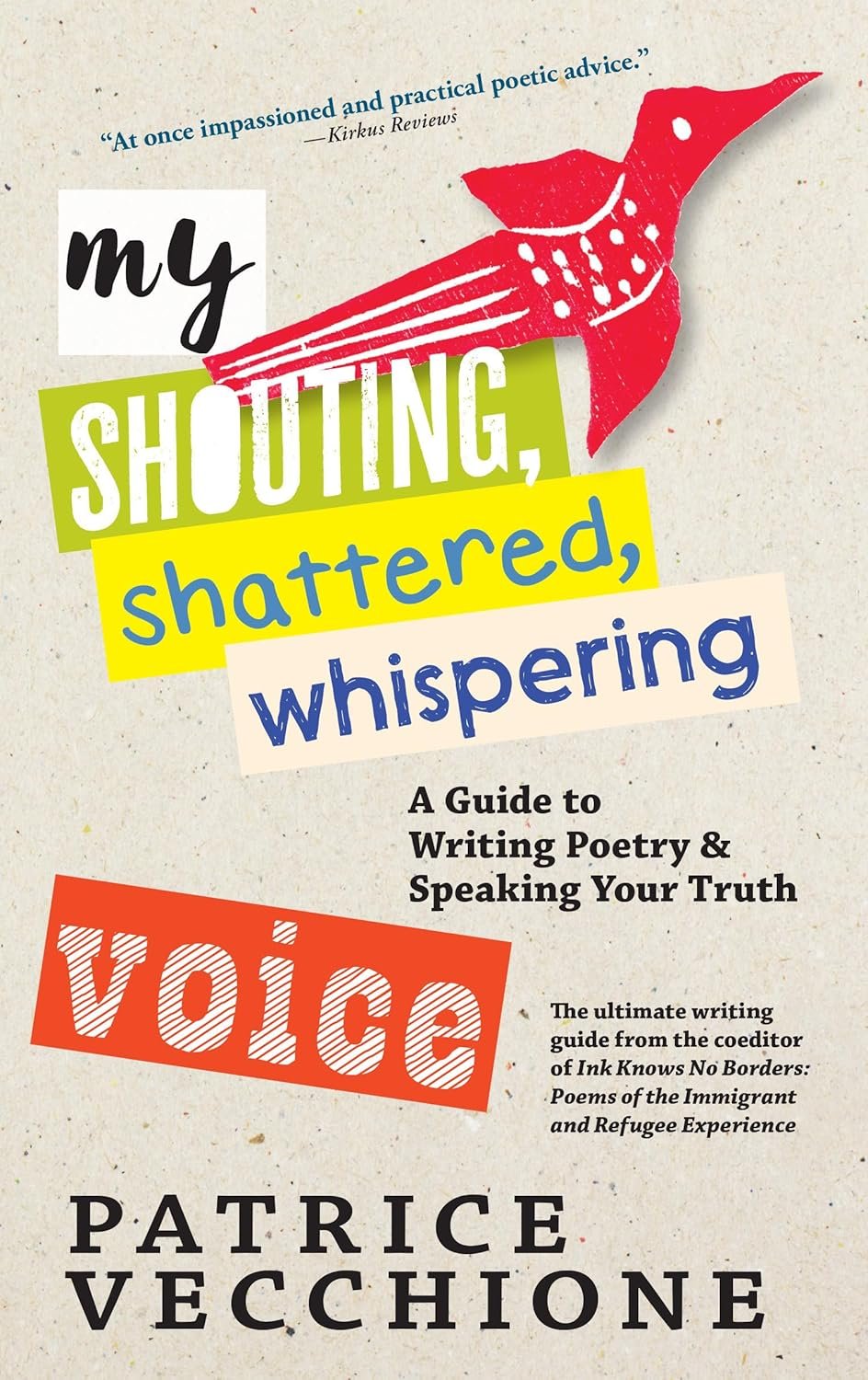
06 Sep Finding Power in Silence: A Journey Through My Shouting, Shattered, Whispering Voice
My Shouting, Shattered, Whispering Voice: A Guide to Writing Poetry and Speaking Your Truth – A Review
As someone who has always been captivated by the power of words, I was drawn to My Shouting, Shattered, Whispering Voice: A Guide to Writing Poetry and Speaking Your Truth by Patrice Vecchione the moment I encountered it. The title itself resonated with a deep part of me—a blend of chaos and calm, of emotions yearning for expression. As I delved into Vecchione’s guide, I found myself not just reading, but truly reflecting on the essence of voice, creation, and the vital act of sharing one’s truths.
This guide stands out as a beacon for both budding and seasoned writers. Vecchione’s mission to demystify poetry feels like a warm embrace, inviting readers to step away from their self-doubt and toward the empowering act of creation. With short, digestible chapters filled with prompts, insightful interviews with contemporary poets, and snippets of poetry, the book cultivates an environment where creativity can flourish. It’s a space where you can explore emotions like rage and joy, showing us that even our most chaotic feelings can be transformed into art.
One of the more profound themes that resonated with me is the idea that every individual’s voice holds significance. Vecchione insists that we all have stories worth telling, urging readers to replace apathy with creativity and hesitance with courage. The simple act of committing a word to a page suddenly feels monumental—a transformative power that struck me deeply. As Marcelo Hernandez Castillo beautifully put it in his testimonial, this book reassures us that we all possess the capacity to create something beautiful.
Vecchione’s writing style is engaging and approachable; her words flow like a gentle stream, weaving together inspiration and instruction seamlessly. I particularly appreciated how she intersperses personal anecdotes and practical exercises throughout the guide. One memorable prompt that caught my attention encouraged writers to pick an object in their room and write a poem about their relationship with it. This exercise reminded me that inspiration can often be found in the mundane, a revelation that sparked a flurry of creativity as I gazed around my own space.
In terms of pacing, the book gracefully balances theory with practice. It never feels overwhelming; rather, it invites readers to explore at their own pace, reflecting on what they’ve learned and applying it to their lives. The testimonials from poets like Kim Addonizio are sprinkled throughout, and I particularly loved a line from Addonizio: “Writing poetry is like breathing; the more you do it, the more alive you feel.” This speaks to the very heart of Vecchione’s mission—encouraging writers to breathe life into their experiences.
In conclusion, My Shouting, Shattered, Whispering Voice is not just a guide; it resonates as a vital companion for anyone who has ever grappled with the challenge of articulating their truth, whether for an audience or just for themselves. I wholeheartedly recommend this book for young adults, aspiring poets, or anyone seeking to communicate their emotions authentically. For me, it was a reminder of the power we all possess to create and heal through words, and how sharing our voices can illuminate even the darkest corners of our experiences. This guide has firmly settled in my collection, and I can’t wait to revisit it as a source of inspiration in my own writing journey.









